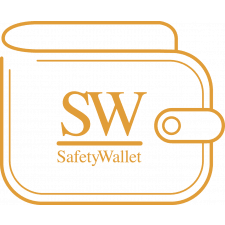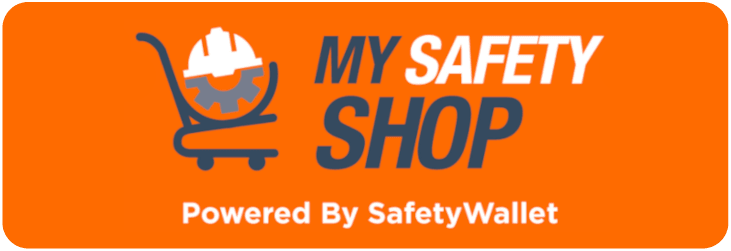The Impact of Fatigue on Workplace Safety
Fatigue is a significant and often overlooked factor that can severely impact workplace safety. Unlike other more visible workplace hazards, fatigue is an insidious issue that gradually erodes an employee's physical and mental capabilities. It manifests as a state of weariness, reduced alertness, and impaired decision-making, all of which can lead to decreased productivity, increased errors, and a higher risk of accidents. The consequences of fatigue are far-reaching, affecting not only the individual employee but also the overall safety culture and operational efficiency of the organisation. This blog explores the multifaceted nature of fatigue, its causes and consequences, and provides actionable strategies to mitigate its impact, ensuring a safer and more productive workplace for all.
Worried about Workplace Safety? We've got you covered. Complete the form below to get more information.
Causes and Consequences of Workplace Fatigue
Fatigue in the workplace can stem from various sources, including long working hours, insufficient rest breaks, high-stress levels, and poor sleep quality. Here are some common causes and their consequences:
Long Working Hours:
Cause: Extended shifts and overtime can lead to physical and mental exhaustion.
Consequence: Increased likelihood of errors, reduced alertness, and higher accident rates.
Insufficient Rest Breaks:
Cause: Lack of adequate breaks during work hours prevents employees from recovering from physical and mental exertion.
Consequence: Decreased concentration, slower reaction times, and impaired decision-making
High-Stress Levels:
Cause: High workloads, tight deadlines, and demanding tasks can contribute to chronic stress.
Consequence: Stress can exacerbate fatigue, leading to burnout and decreased overall performance.
Poor Sleep Quality:
Cause: Irregular sleep patterns, sleep disorders, and inadequate sleep duration can result in chronic fatigue.
Consequence: Persistent tiredness, mood swings, and a higher risk of workplace incidents.
Strategies for Fatigue Management in the workplace
Managing fatigue at work effectively requires a multifaceted approach that addresses both organisational practices and individual behaviors. Here are some strategies to consider:
Shift Scheduling:
Implement rotating shifts to ensure employees have adequate time to rest between shifts.
Avoid scheduling long consecutive workdays and provide sufficient days off to recover.
Rest Breaks:
Encourage regular short breaks during work hours to help employees recharge.
Designate rest areas where employees can relax and take a break from their tasks.
Workload Management:
Distribute workloads evenly to prevent overburdening employees.
Set realistic deadlines and provide support to manage high-stress tasks.
Sleep and Wellness Programs:
Educate employees about the importance of good sleep hygiene and provide resources to improve sleep quality.
Offer wellness programs that promote physical and mental well-being, such as exercise classes, stress management workshops, and relaxation techniques.
The Role of Sleep and Wellness Programs
Sleep and wellness programs play a crucial role in mitigating workplace fatigue. These programs can help employees develop healthy sleep habits and improve their overall well-being. Here are some key components of effective sleep and wellness programs:
Sleep Education:
Provide training on the importance of sleep and its impact on health and safety.
Offer tips for improving sleep quality, such as maintaining a regular sleep schedule, creating a conducive sleep environment, and avoiding stimulants before bedtime.
Wellness Initiatives:
Implement programs that promote physical activity, healthy eating, and stress reduction.
Encourage participation in activities that enhance mental well-being, such as mindfulness meditation and yoga.
Supportive Policies:
Develop policies that support work-life balance, such as flexible working hours and remote work options.
Encourage employees to take their allotted vacation days and avoid working during off-hours.
Case Studies of Fatigue Management Initiatives
Several organisations have successfully implemented fatigue management initiatives to improve workplace safety. Here are a few examples:
Transportation Industry:
A major airline introduced a fatigue risk management system that includes regular assessments of pilot fatigue levels, mandatory rest periods, and education on sleep hygiene. As a result, the airline reported a significant reduction in fatigue-related incidents.
Healthcare Sector:
A hospital implemented a comprehensive wellness program that includes stress management workshops, on-site fitness facilities, and flexible scheduling for healthcare workers. The program led to improved employee well-being and a decrease in medical errors.
Manufacturing Industry:
A manufacturing company adopted a shift rotation system that ensures employees have sufficient rest between shifts. The company also provided training on the importance of sleep and regular breaks. This initiative resulted in increased productivity and a reduction in workplace accidents.
Fatigue is a critical factor that can compromise workplace safety and employee well-being. By understanding the causes and consequences of fatigue and implementing effective management strategies, organisations can create a safer and more productive work environment. Investing in sleep and wellness programs, promoting healthy work practices, and fostering a culture of well-being are essential steps in mitigating the impact of fatigue on workplace safety.
For more information on managing workplace fatigue and other health and safety topics, consult with SafetyWallet's support team and your Safety Professional. The OHS Online Cloud-Based Health and Safety Management System and your AI Assistant, Walli are also available to assist in managing and improving workplace safety practices.
Not using Walli yet? Scan the below QR Code to gain access
Elevate Your Health and Safety Management
Embrace our Triple P approach and transform your workplace into a haven of safety and productivity.
The SafetyWallet Triple P Health and Safety Management System is available at no cost to all SafetyWallet subscribers, and supported by MAKROSAFE team members. This means you are able to get a state-of-the-art system with operational support for your entity thereby improving the health and safety in the workplace as well as improving your legal compliance to Occupational Health and Safety Legislation.
Click on the image below to find a SafetyWallet Solution that suits your business (Branch/Site specific) and get the benefits along with the subscription:
To find out what other Additional Services we offer, please click on the picture below:
SAFETYWALLET In Co-operation with MAKROSAFE and MY SAFETY SHOP
Disclaimer:
Walli can make mistakes. Consider checking important information and please speak to SafetyWallet's support team, should you be in doubt. Please also see: https://www.safetywallet.co.za/termsandconditions






Leave a comment